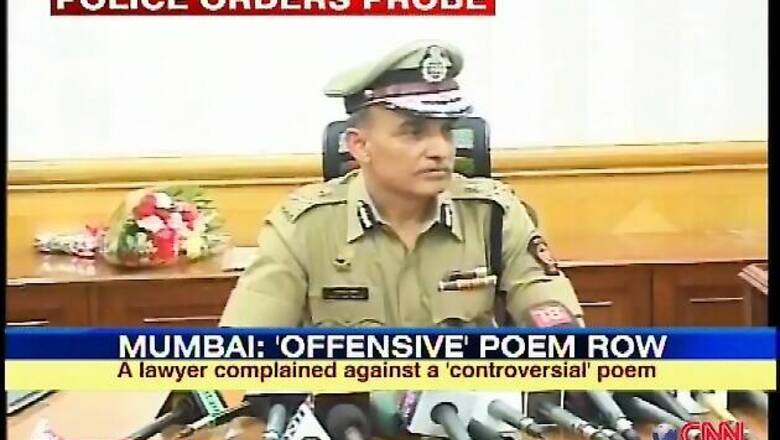
views
Mumbai: The latest edition of Mumbai Police's in-house journal 'Samwad' which came out on Tuesday, carried an unconditional apology by woman police inspector Sujata Patil, whose poem had sparked off a controversy. Traffic police inspector (Matunga division) Sujata Patil's controversial poem in an earlier issue of the journal, had described 2012's Azad Maidan protesters as "snakes" and "traitors", whose hands should have been "chopped off".
Patil had already apologised in writing, but on Tuesday it was published in the latest edition of 'Samwad', police sources said. She did not intend to hurt anybody's religious sentiments or any religion through her poem, she wrote in the journal.
Joint Police Commissioner (Administration) Hemant Nagrale who is also Samwad's editor and publisher, has stated in writing that Patil had already apologised and she did not intend to hurt anybody's sentiments. "I too agree with her. Samwad is a platform to encourage the creativity of policemen and it is circulated among them," he wrote in the journal's latest issue.
Patil's poem which was published in an earlier issue of Samwad read, "Hausla buland tha, izzat lut rahi thi, himmat ki gaddaron ne Amar Jyoti ko haath lagane ki, kaat dete haath unke toh faryad kisi ki bhi na hoti. Saanp ko doodh pila kar, baat kare hain hum bhaichare ki. (Their morale was high, women were being dishonoured. The traitors had the audacity to touch Amar Jawan Jyoti. Had we cut off their hands, nobody would have complained. We feed milk to the snakes and then talk of harmony".
Her poem, which also suggested that the police ought to have played "goliyon ki holi" (Holi with bullets), triggered off a huge controversy and prompted Mumbai Police Commissioner Satyapal Singh to order an inquiry. On August 11 last year, a demonstration called to protest alleged atrocities on Muslims in Assam and Myanmar had turned violent, resulting in the death of two people, injuries to scores, including women police personnel, who were also molested as well as massive destruction of property.




















Comments
0 comment